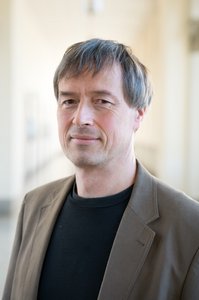Tuesday, 05 November, 2024
ERC Synergy Grant to CeNS member Dieter Braun
Origin of life in heated gas bubbles
Dieter Braun is Professor of Systems Biophysics at LMU and a member of CeNS, the ORIGINS Excellence Cluster and spokesperson of the CRC “Molecular evolution in prebiotic environments”. His research investigates the molecular foundations of the origin of life.
It remains one of mankind's greatest mysteries, for which there are no clear scientific answers: the origin of life. What conditions had to exist on the young Earth for molecules to join together and to form the precursors of organic life and herald the beginning of biological evolution?
BubbleLife (From RNA-peptide coevolution to cellular life at heated air bubbles) aims to find answer to this fundamental question. Together with Professor Hannes Mutschler from the Technical University of Dortmund (speaker), Dieter Braun is leading the new project, which is being funded with 6 million euros over six years. “We’re an interdisciplinary team from the fields of chemistry, physics, and biochemistry, and we’ve collaborated very successfully in the past,” says the physicist.
Previous experiments have shown that one factor could have played a decisive role in the early development of life: gas bubbles that are heated up on one side. Water evaporates from their surface and sucks in molecules. These conditions are ideal for an evolutionary process in which the right molecules interact to form cell-like structures. Self-sustaining replication networks could thus have formed for the first time from individual RNA building blocks. At the same time, amino acids could have polymerized to form the first peptides, while lipids formed membrane vesicles that encapsulated these precursors of transcription and translation.
BubbleLife plans to combine these hypotheses and test them experimentally. “We are retracing the path from the Darwinian evolution of RNA and peptides to the origin of the first cells,” explains Braun. Although this presumably took millions of years to happen, the experiments to simulate the process in test tubes will take a few weeks. “Our goal is to simulate all this in a consistent environment with a small selection of initial molecules.” If all goes well, the team's interdisciplinary work will eventually lead to synthetically produced "protocell generators" that feed and encapsulate both primitive RNA replicators and modern systems of transcription and translation. “BubbleLife will hopefully fundamentally change our understanding of the origin of life on Earth – and possibly elsewhere in the universe,” says Dieter Braun.
More information
Study: Origin of life: A new scenario for replication
Study: Natural recycling at the origin of life
News about new CRC: Origins of life - new CRC at LMU
Source: LMU Newsroom


